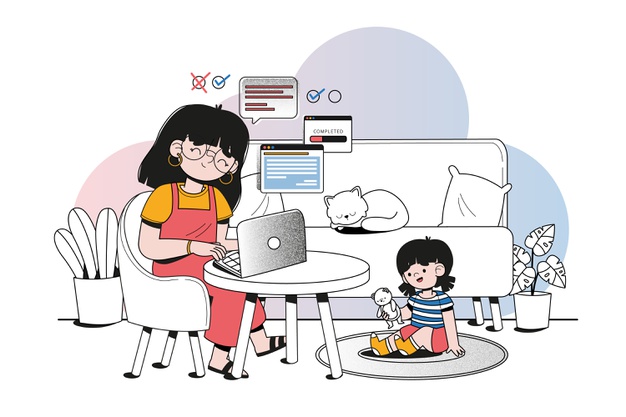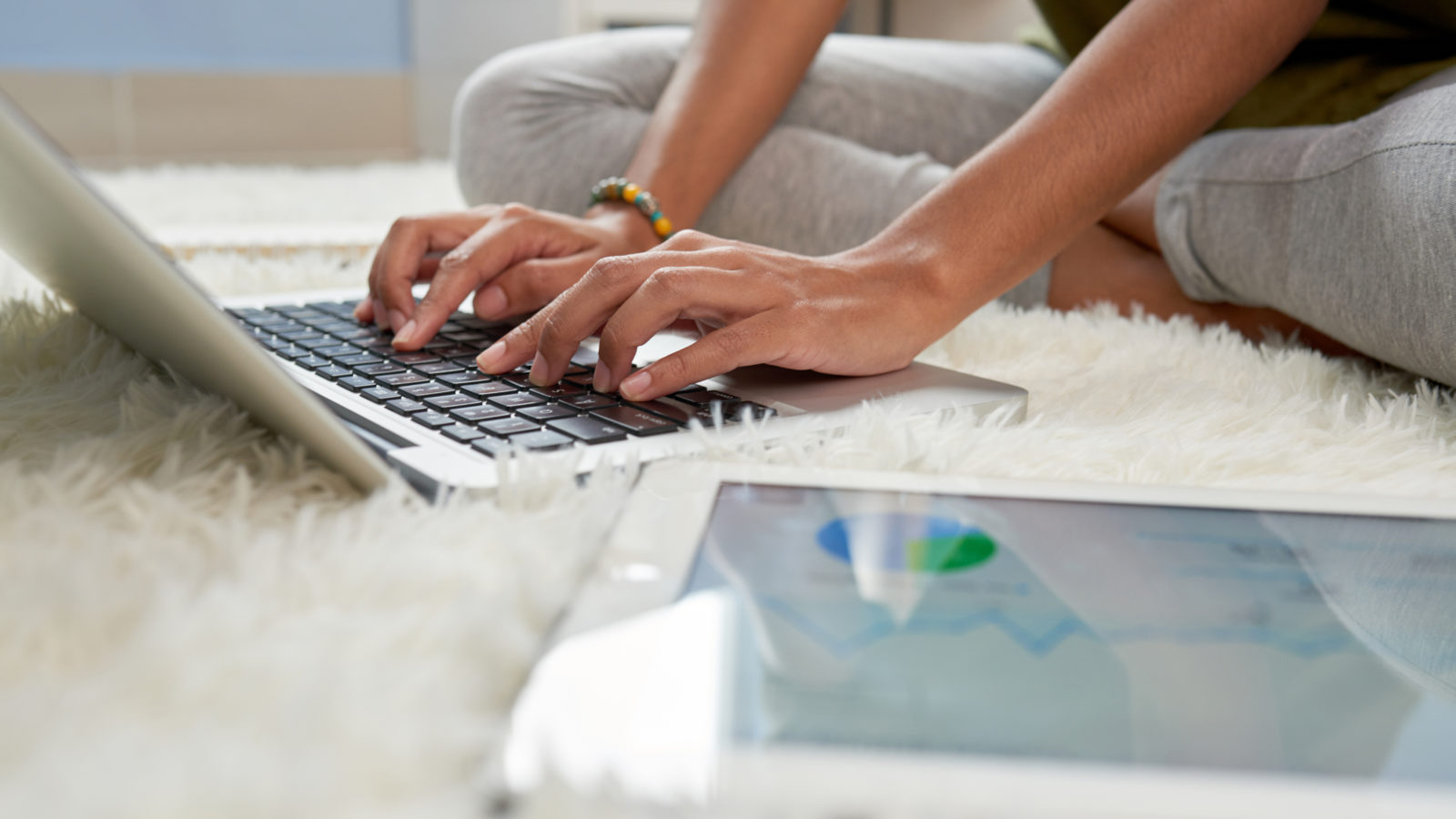So much is being written on WFH. Once thought of as an option of managing employees, by companies, largely non-traditional MNCs, this ‘perk’ has taken the shape of a mandated essential for business to exist unlike what was a few weeks ago considered a Business Continuity Plan.
A short WhatsApp chat with Vijay Sankaran, who very casually threw me the idea, that I write a blog on women and their experiences on the current WFH scenario, got me started on a ‘kitchen-sink’ approach on this topic. I reached out to my tribe to share with me their experience of these last few weeks. Here is their story.
Setting the context
March 2020. When WFH got its place in the discourse of work-life integration. All because one microorganism decided to set foot on Planet Earth, getting the world’s mightiest workforce scurrying home.
Remote working has been on the uptake. A product born from the marriage of tech companies and technology and nested in the cradle of flexibility and the millennial mindset. Enter Coronavirus! You just changed life and work as we knew it. Overnight. Did what no consultancy firm, senior leadership bench, HR manager has ever done.
Cut to the apartment. One laptop in place on the kitchen counter top. Child clocking in school work. A call being logged into from another laptop. A scene straight out of any home, on any day of March or April 2020. From anywhere in the world. A pot of food prepped for lunch, sitting on the stove. Included in this pretty picture is the cup, which may not contain coffee as strong or tea as well-brewed, as the office cafeteria, but still works. Life as we know it is ready to face the world of work. From home.
Some case studies
Anuprita Bhomick, transited into her study, fairly frictionless. Normally reserved for after-hour calls, the study is now a converted home-office for this Googler.
Quiet space is the ask for entrepreneur, Abhilash Jha. Neither discipline nor routine are her challenges. Accommodating husband and brother-in-law into the shared, home-office space is the snag that she is dealing with.
Space is not an issue for Heather Saville Gupta. Discipline was. Her reaction to the innate flexibility and fluidity that WFH warrants boiled down to a concoction of emotions—curiosity, excitement, dread.
Mariko Braswell’s challenge is to try and ensure business as usual while balancing the attention that her home and kids need. These two tasks come from two very different parts of her brain, she says, yet must work simultaneously, somehow in the moment.
Pre-Covid-19 saw Monila Kothari and Smita Rastogi airborne, ever so frequently. Smita, checks the box in favour of WFH. It buys her time and lends productivity. What is helping Monila ride the changed circumstances is the discipline of keeping to the same schedule, as if going to office in Singapore.
With two grown boys who live in New York, and no home caring responsibilities in the present, Zarina Stanford, does not view the current WFH as an ‘enforcement’, but rather a contribution to solving the global crisis. We are in this together, she adds, using the extra hours saved by not having to commute to unpack, having just moved to Boston.
For Renu Narvekar, calls can be managed from home, she says breezily, clad in lounge pants and a tee, it is the saddling of housework that is the real disruption.
For the mother of three little children, Rachele Focardi, author of a soon-to-be published book on multi-generational workforce, WFH is not new. With a role that is heavily client-facing, the present WFH scenario is not particularly productive. It is not so much about her being at home, as much as her being home with the kids, concurrently. She finds that with little or no structure, it is really easy to merge everything together and lose control.
Quite the opposite for Krusha Sahajwani Malkani whose WFH experience has been rewarding. With no kids and living with in-laws, she tucks into fresh, hot lunch with the family. With her HQ based in Paris, working virtual is not new to her. WFH is comfortable, weaning herself away is going to be her dilemma post-COVID-19.
According to Priya Khanna, it all starts with accepting reality versus resisting it. With everyone at home, a predefined workstation and each member in the household getting ready for the day, like they would on a regular work or school day, ensures focus. And if one is not journalling, now is the time, she sagaciously recommends. Not only does it track deliverables and progress but also generates a sense of accomplishment.

Prachi Panda wakes up early which means she also starts work early. With no lunch buddy, saving on travel time, not having to don the business look, her experiment in the first week of WFH found her so much in the flow, that she worked all the way, from 8 am through nearly dinner time. It took her three straight days to realise that she hadn’t taken breaks and not had enough water. Now her calendar includes breaks to ensure that health is not compromised.
it was a charming arrangement of having their very own co-working space, as Prachi and her husband alternated between the two locations of their bedroom and the dining table. Soon, their strained backs and sore necks led them to invest in a workstation and an ergonomic chair. Cracking the comfort code to ensure productivity is a WFH essential.
With the dining table now elevated to the study, where she works alongside her husband and partner, Deepa Soman is operating just as she was, pre-COVID-19. Running her own business, located close to her home, she is able to accommodate WFH rather seamlessly. Being physically outside of an office means fewer interruptions on her time, allowing her the bandwidth to think strategically, rather than being overrun by everyday operational issues.
The efficiency and streamlined functioning of an office system facilitates productivity and creativity. This may seem counterintuitive to a mind that is creative and original, but it makes sense when you think about it.
Even the most ingenious minds appreciate an external, organised space to channelise their wild ideas. On the other hand, what happens to those who best perform in a structured and organised set-up, and now have to pivot to self-create a defined routine for themselves in their own homes? How does it work for them, then?
Shower, get dressed, in something other than your sleeping clothes, though maybe not office garb. Who better can suggest other than Barbara Zepp Larson, who studies virtual working at Northeastern University, Boston? And to make WFH sustainable, form a WFH routine for or with your kids and partner, she offers.
Discipline scores high on WFH from get go. Filter chatter, censor Netflix, rationalise social media. Add music, exercise and functional breaks. WFH is home. To stay.


